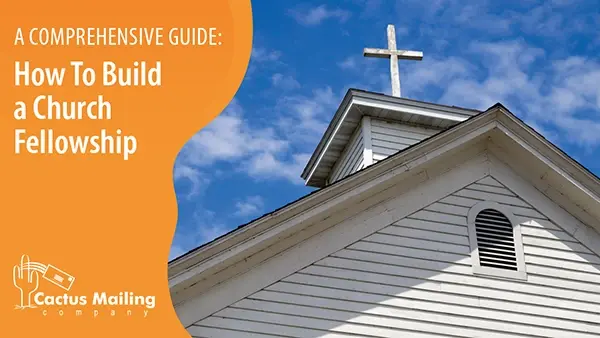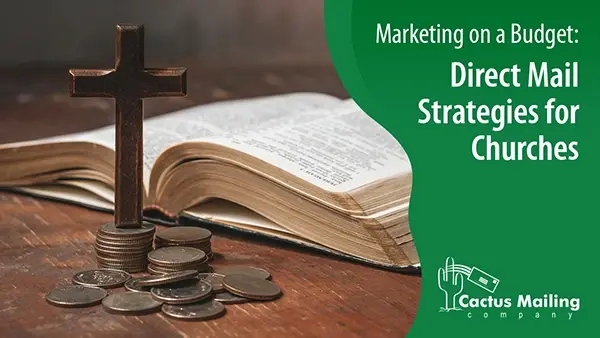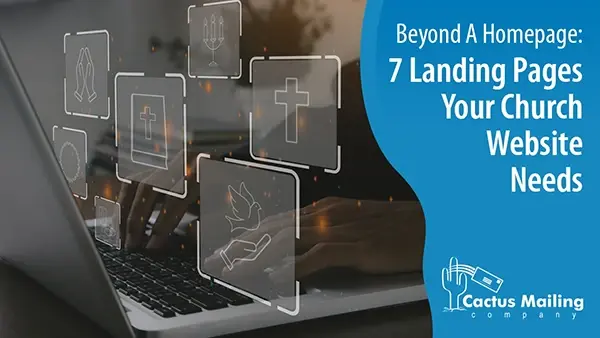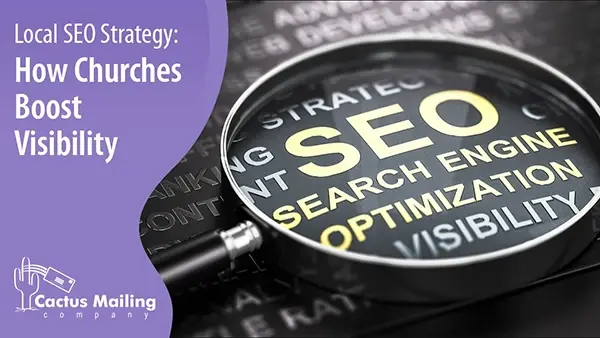We Are Here to Help!
What to Expect from Us:
No Pressure, Just Service!
Get no obligation pricing details and strategies that will work for your business.
Nowadays, people turn to church not only for worship and spiritual guidance but to find community. Fellowship within Christian churches is the intentional act of building a community, whether it’s through large gatherings, online events, or fundraisers.
However, building a fellowship can be tricky, even for established churches looking to revitalize their congregation–and doubly so for new churches with something to prove. It requires thoughtful planning and a deep understanding of your congregation's unique needs. In this guide, we'll explore practical ways to connect within your church, create spaces for authentic relationships, and grow a vibrant faith-based community.
Plan and Organize Church Events
Church events often serve as the gateway for many to join a fellowship, offering a relaxed environment for newcomers to connect with the community. A well-planned event can leave a lasting impression and provide a meaningful introduction to the church's values and members. Whether it's a large gathering or a more intimate occasion, events can be a powerful tool to bring people together.
Here are a few types of events your church can organize to welcome new members:
- Community Dinners: Host regular potlucks or themed dinners where members can break bread together in a casual, welcoming setting.
- Outdoor Gatherings: Plan picnics, BBQs, or outdoor movie nights where people can bring their families and enjoy fellowship in a relaxed atmosphere.
- Service Projects: Organize group volunteer opportunities in the local community, encouraging newcomers to participate in acts of service.
- Small Group Bible Studies: Offer regular small group sessions to allow new attendees to explore faith in a more intimate and conversational environment.
- Welcome Sundays: Set aside a specific Sunday each month to highlight new attendees and host a special reception after the service.
- Family-Friendly Events: Host events like game nights, sports days, or family fun days to attract families looking for a sense of belonging.
- Workshops and Classes: Offer classes on parenting, marriage enrichment, or financial planning to provide fellowship and practical support.
To effectively invite new members and other neighbors to your community events, think beyond the Facebook post and turn to printed media like postcards. Postcards offer a personal and tangible way to reach people, whether new to the community or long-time members. The design should reflect the warmth of your church, including clear event details such as date, time, and location, along with a welcoming message or Bible verse to make it feel personal.
Beyond postcards, consider other printed materials like flyers or brochures, which can be included in welcome packets for first-time visitors or distributed within the community. These invitations help newcomers feel informed and included, offering them opportunities to get involved. When followed by a welcoming and warm church event, well-designed printed invitations can foster deeper connections and encourage long-term fellowship.
Create a Welcoming Environment
A welcoming environment fosters fellowship within the church, whether during a Sunday service or a church activity. Intentionally welcoming everyone can encourage new people to return both for services and community events.
Providing free food or refreshments before or after services and events is a simple yet impactful way to encourage conversation and create a sense of hospitality. On Sunday mornings, offering coffee, tea, or light snacks can make people feel more at ease and give them a reason to linger and connect with others. A simple conversation at the coffee station could lead to lifelong friendships within your church.
Another helpful practice is enlisting congregation members to serve as greeters at the entrance. These greeters can offer a warm handshake or smile and make personal introductions, helping new visitors feel acknowledged and welcomed as they enter the church. Clearly marked signs for restrooms, seating, and childcare facilities can help guests feel more comfortable navigating the space.

Build Small Group Activities
In addition to larger, more boisterous gatherings like BBQs or movie nights, give your members the chance to get to know each other in quieter, more intimate settings. These groups provide a setting where members can connect on a deeper level, share personal experiences, and strengthen their faith.
Bible Study Groups
Small Bible study groups are an excellent way to help your members grow their faith and social network. Planning a small group strategy based on your congregation is easier than you may think.
To start a successful Bible study group, create groups catering to your congregation’s interests and backgrounds. Begin by organizing groups based on demographics or shared life stages, such as women’s, men’s, youth, or young adult groups. These tailored environments allow members to engage in meaningful discussions about their experiences.
For each group, choose a study leader who is both knowledgeable and passionate about Scripture. Offer structured materials like study guides or themed curricula to guide discussions and ensure consistency. Establish a regular meeting schedule—whether weekly or bi-weekly—to keep the group on track and build momentum. To promote deeper connections, encourage members to share personal insights and pose open-ended questions that spark meaningful conversations. This approach will create a supportive environment where participants can grow spiritually and build lasting relationships within the church.
Volunteering and Service Trips
To encourage active participation in volunteering and service trips, start by organizing local volunteer opportunities within the community. Partner with local organizations, such as food banks, shelters, or schools, to provide consistent service opportunities. For each event, designate a team leader responsible for coordinating volunteers and ensuring that all logistics—such as transportation, materials, and timing—are handled efficiently.
Plan annual or bi-annual service trips for larger-scale involvement within your region or internationally. When organizing a service trip, choose a destination where the group can collaborate with mission organizations to provide structure. Set clear goals for the trip, outlining what will be accomplished and how participants will engage in hands-on work.
Promote local volunteering and service trips regularly during Sunday services and through church newsletters to ensure maximum participation. Encourage members to invite others and provide detailed information on how serving others can deepen their faith and build stronger connections within the church.

Common Challenges of Fellowshipping
Building a fellowship within your church can be a fulfilling and rewarding endeavor, but it’s not without challenges. Here’s what to look out for when you’re trying to create a community.
Low Participation Rates
Many churches experience low participation in weekly Sunday services, activities, and events. This often occurs simply because people in the surrounding area may not be aware of these gatherings. Even with efforts to engage the community, attendance will remain low if people don’t know about your church or its events.
One effective solution is to use reliable mailing lists to reach out to community members who might be interested in attending but are unaware of a nearby church. Targeting households with mail campaigns ensures that those living in your area are informed about upcoming events, services, and opportunities to connect.
Organizing
Organizing church events, services, and activities can be challenging for churches of any size. Whether planning a weekly service or hosting a community outreach event, leaders often struggle to manage the logistics and ensure everything runs smoothly. To better organize church growth and fellowship activities, consider implementing scheduling tools, creating detailed event plans, and delegating tasks among church volunteers and staff. Setting up small committees or leadership teams to handle specific areas like event planning, volunteer coordination, or community outreach can ease the burden on church leaders and allow for more efficient organization.
Sustaining Long-Term Participation
When churches experience a surge in new members, it can feel overwhelming for leaders to keep up with the demand, and this can sometimes lead to a decline in participation over time. Sustaining long-term engagement requires intentional strategies to keep new and existing members involved. Church leaders can maintain participation by fostering personal connections, regularly checking in with members, and offering ongoing opportunities for involvement, such as small groups, volunteer roles, or regular follow-up on personal spiritual growth. Creating a welcoming, consistent environment where people feel supported will encourage them to return and continue growing in fellowship.
Use Digital Tools to Connect with Your Community
Incorporating digital tools into your church’s outreach strategy allows you to connect with potential new members and your current congregation effectively. These platforms provide practical ways to share important updates, send event invitations, and extend your church’s message to a broader audience.
There are several ways your church can digitally connect with its members:
- Build a Church Website: A well-designed website is a central hub for your church's online presence. It can host important information such as service times, upcoming events, and ways to get involved. A good church website should also allow new visitors to learn more about your fellowship, provide contact information, and include an option for online giving.
- Newsletter Emails: Regular email newsletters are a simple yet powerful tool for staying in touch with your congregation. Use newsletters to send event reminders, share devotional content, or announce special church news. Include a call to action, such as inviting recipients to join a new Bible study group or participate in an upcoming service project.
- Social Media Posts: Social media platforms like Facebook, Instagram, and Twitter provide excellent opportunities for outreach and engagement. Post updates about church activities, share inspiring messages and encourage interaction through comments and shares. You can also use social media to livestream services, making it easier for members to join even if they can’t attend in person.
Integrating these digital tools into your church’s communication strategy lets you keep your community informed and engaged while attracting new members searching for a spiritual home online.

Market to Your Community
Marketing isn’t just a tool for businesses; it’s an effective way for churches to connect with new fellowship members and share their message with the wider community. By using marketing strategies, churches can highlight their services, events, and missions, making it easier for people to discover a place where they can belong. Thoughtful marketing spreads awareness of your church and fosters engagement with new and current members.
Traditional Marketing Techniques
Traditional marketing methods, such as magazine and billboard advertising, still play a vital role in reaching people offline. Magazine ads in local publications allow your church to reach potential members interested in joining your fellowship but unaware of your presence. Additionally, billboards in high-traffic areas offer a visual reminder of upcoming services or special events, ensuring that your church is visible to a wide audience. Distributing printed flyers and brochures at local businesses or community centers also ensures that residents have tangible information about your church, increasing their likelihood of attending services or activities.
Digital Marketing Techniques
Digital marketing is essential for reaching potential new members online. Several effective digital strategies include:
- Social Media: Platforms like Facebook and Instagram allow you to promote events, share testimonials, and engage with the community through posts, stories, and live streams. Social media fosters direct interaction with both current and prospective members.
- Google Ads: Google Ads can help you reach people actively searching for churches or spiritual guidance in your area. These targeted ads ensure your church is visible to those seeking a place to worship.
- SEO (Search Engine Optimization): By optimizing your church website for local search terms, you can appear in search results when people look for churches in your area. This increases visibility and attracts visitors searching online for faith-based communities.
These online strategies help you connect to a whole new generation instantly.
Direct Mailing
Direct mail remains one of the most effective tools for reaching potential community members. For example, sending postcards can be particularly impactful when promoting upcoming events like holiday services, community outreach programs, or special sermon series. A well-designed postcard featuring eye-catching visuals and easy-to-read event details makes it easy for recipients to understand what’s happening and how to get involved quickly.
On the other hand, newsletters allow you to provide more detailed updates on church happenings, making them ideal for ongoing communication. Flyers can also be an excellent way to inform the community about major events or outreach programs. Direct mail creates a personal touch that encourages recipients to engage with your church.
From organizing impactful events and fostering meaningful small group activities to utilizing both marketing strategies, there are numerous ways to grow your congregation and strengthen its sense of community. Whether through welcoming environments, thoughtful invitations, or service opportunities, your church can become a place where people not only come for worship but also find a lasting and supportive spiritual home. By staying proactive and adaptable in your efforts, you can overcome common challenges and cultivate a fellowship that thrives for years to come.
Resources for Fellowshipping
Fellowship and Community Building Resources
- Christian Community Development Association (CCDA): Focuses on empowering churches through faith-based community development initiatives with programs, training, and resources.
- The Gospel Coalition: Offers a wide range of articles, podcasts, and sermons aimed at helping churches build community and foster meaningful relationships through discipleship and outreach.
- Outreach Magazine: Provides strategies and tools for churches to grow their fellowship through outreach initiatives, offering practical resources and guides.
- Church Marketing University: Offers courses and tools to help churches engage with their communities effectively through marketing strategies and digital outreach tools.
- Acts 29 Network: Helps churches plant new congregations and expand their influence through discipleship, community outreach, and leadership training.
- Small Group Network: This organization specializes in helping churches establish and grow small group ministries, providing leadership resources, curriculum planning, and group dynamics guidance.
- Barna Group: Offers research and data-driven insights on church engagement and fellowship, guiding churches in their strategies for growth and outreach.
Event Planning and Organization Resources
- Google Calendar: A free and easy-to-use tool for scheduling church events, meetings, and services, allowing leaders and members to stay organized and informed with shared calendars and reminders.
- Evernote: A versatile note-taking and organization tool that helps church leaders plan events, organize meeting notes, and store important documents all in one place.
- Trello: A project management tool that allows churches to visually organize tasks, delegate responsibilities, and track progress for events and fellowship activities through boards, lists, and cards.
- Slack: A communication platform that can streamline event planning by enabling teams to collaborate in real time, share documents, and keep conversations organized for better coordination.
- Asana: A powerful project management platform for organizing church events and tasks, allowing leaders to assign roles, set deadlines, and manage all aspects of fellowship building efficiently.
- TickTick: A task management app that helps churches stay on top of event planning by setting reminders, creating to-do lists, and prioritizing tasks to keep the church’s schedule running smoothly.
- Basecamp: A team collaboration and project management tool that is ideal for organizing larger church events, allowing leaders to assign tasks, track progress, and keep communication clear among volunteers and staff.
- Eventbrite: A comprehensive event management platform that churches can use to plan, promote, and manage event registration, making it easy to track attendance and share event details with the community.
Marketing Tools for Church Fellowships
- Cactus Mailing: Provides direct mail marketing solutions, including postcards and flyers, to help churches reach local community members with personalized, targeted mail campaigns.
- Mailchimp: A user-friendly email marketing platform that enables churches to send their congregation newsletters, event invites, and updates while tracking engagement and building mailing lists.
- Hootsuite: A social media management tool that helps churches schedule posts, monitor engagement, and manage multiple social media accounts, making it easier to share church updates and events with the community.
- Canva: A graphic design platform that allows churches to create visually appealing flyers, social media posts, event banners, and other promotional materials with easy-to-use templates and customization tools.
- Google Ads: A digital advertising tool that allows churches to create targeted ads for people searching for local churches or spiritual guidance, helping to increase visibility and drive new visitors to the church.
- Buffer: A social media scheduling tool that helps churches plan, post, and analyze their social media content across multiple platforms, ensuring consistent engagement and outreach.
- Constant Contact is an email marketing platform designed to help churches send personalized messages, event reminders, and follow-up emails to maintain engagement with new and existing members.
- Yoast SEO: A search engine optimization (SEO) plugin for church websites that help optimize content for search engines, increasing visibility and attracting more visitors searching for local faith-based communities.

 Mike Ryan: Oct 09, 2024
Mike Ryan: Oct 09, 2024



 Cactus Mail Team
Cactus Mail Team